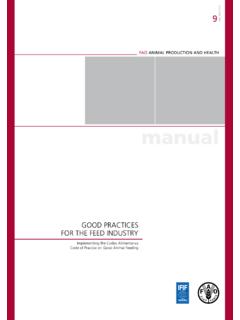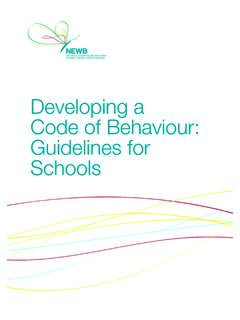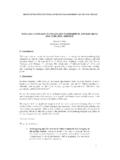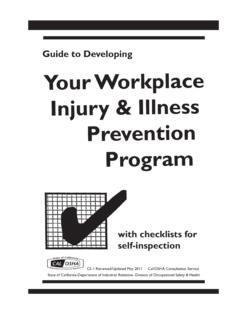Transcription of Developing and implementing a low-level concerns policy: …
1 September 2022 Developing and implementing a low-level concerns policy: a guide for organisations which work with childrenSafeguarding Unit, Farrer & Co (Adele Eastman, Owen O Rorke, Katie Fudakowski and David Smellie), Marcus Erooga, and Delyth LynchDeveloping and implementing a low-level concerns policy: A guide for organisations which work with children1. Introduction 2. Definitions3. concerns /allegations4. The importance of sharing low-level concerns5. What can we learn from serious case reviews? 6. Designing, implementing and embedding a written low-level concerns policy initial points to consider7.
2 Do any issues under data protection law arise?8. 9. How should low-level concerns be held?10. Should the central low-level concerns file be reviewed?11. Where should records of a low-level concern be kept and for how long?12. Should a low-level conern be referred to in a reference?12357810111516161717 Contents13. What is the role of the Governance Body? 14. ConclusionAppendices1718 Other specific questions to address when designing, implementing and embedding a low-level concerns policyReturn to contents1. Organisational culture is a slippery concept often referred to but rarely defined.
3 It is culture, however, that sets the context and expectations of all behaviour in an organisation, and a positive culture where concerns can be identified and spoken about openly is a key element of a strong safeguarding system. What that means in practice is ensuring that all those who work with children behave appropriately, and the early identification and prompt and appropriate management of concerns about adults, is critical to effective Creating a culture in which all safeguarding concerns and allegations about adults (including those that do not meet the harm threshold) are shared responsibly and with the right person, and recorded and dealt with appropriately, is crucial.
4 If implemented well this should encourage an open and transparent culture; enable organisations to identify inappropriate, problematic or concerning behaviour early; minimise the risk of abuse; and ensure that adults working in or on behalf of the organisation are clear about professional boundaries and act within them, in accordance with the ethos and values of the Behaviour which is not consistent with the standards and values of an organisation, and which does not meet the organisational expectations encapsulated in their staff code of conduct, needs to be Such behaviour can exist on a wide spectrum from the inadvertent or thoughtless, through to that which is ultimately intended to enable abuse.
5 Where a concern or allegation about an individual s behaviour may meet the harm threshold, clear guidance exists (as referred to below) on how organisations should report, record and manage Where a concern or allegation falls below that threshold the position was much less clear until the Department for Education (DfE) published its then revised statutory guidance for schools and colleges in England, Keeping Children Safe in Education September 2021 and with further changes made in September 2022 (KCSIE), as reflected Prior to this, following Farrer & Co s role as Secretariat to Hugh Davies QC on his independent review in 2014 arising from the criminal conduct of William Vahey at an international school (the Davies Review),4 and one of his principal recommendations regarding neutral notifications, Farrer & Co assisted a number of schools with introducing a formal written policy on sharing low-level concerns (as we and the DfE now call them), or neutral notifications (as some others currently still refer to them), regarding an adult s behaviour with respect to children.
6 We were also aware that whilst some schools (and other organisations) prior to KCSIE 2021 may not have introduced a formal policy, they may have nonetheless encouraged an approach to sharing low-level concerns /neutral We, the authors of this guidance, believe based on empirical evidence and our respective experience that there is considerable potential in this context to create a safer environment for children, and that there is a need for a revised national approach in organisations which work with children across all sectors (beyond education, in respect of which the DfE is leading the way)
7 Including, for example, charities, and sports organisations. If this is not adopted, such organisations risk enabling the creation of further victims through missed opportunities to identify and effectively intervene in inappropriate, problematic or concerning behaviour. This guidance draws on the following to explain how organisations which work with children can develop, implement and embed a written low-level concerns policy, as part of a culture that enables staff to share any concerns or allegations (including those that do not meet the harm threshold) no matter how small, and how these organisations should respond to them.
8 Our experience, inquiries, serious case reviews, and published research including, for example, that of Marcus Erooga, who considered common factors in organisational child sexual abuse in a review of 20 serious case reviews relating to such abuse in the UK from 2010 2016 (as referred to in more detail on page 6); research undertaken more recently by the Safeguarding Unit at Farrer & Co, in conjunction with Marcus Erooga, which involved us designing two versions of a questionnaire one for schools at which an approach was being taken to sharing low-level concerns /neutral notifications (approach), and another for schools at which a formal policy existed on sharing low-level concerns /neutral notifications (policy).
9 A total of 18 schools responded 13 of which completed the approach questionnaire, and 5 completed the policy questionnaire (our research). 1 As referred to later in this guidance, the staff code of conduct will ideally be informed by the following: Safer Recruitment Consortium (2022) Guidance for safer working practice for those working with children and young people in education settings (GSWP), accessed on 31 August, 2022 at HM Government (2018) Working Together to Safeguard Children: A guide to inter-agency working to safeguard and promote the welfare of children (WTSC), accessed on 31 August, 2022 at.
10 Department for Education (2022) Keeping Children Safe in Education: Statutory guidance for schools and colleges (KCSIE), accessed on 31 August, 2022 at ; and, for example, London Safeguarding Children Procedures (LSCP), Practice Guidance, CP7, accessed on 31 August, 2022 at The draft 2022 guidance was published on 20 May 2022, with a revised version on 31 May 2022, and took effect from 1 September 20224 Davies, H. (2014) Southbank International School Independent Review arising from the criminal conduct of William Vahey: Interim Report, London, Farrer and Davies, H. (2014) Southbank International School Independent Review arising from the criminal conduct of William Vahey: Final Report, London, Farrer & Co, LLPD eveloping and implementing a low-level concerns policy: A guide for organisations which work with children1 Return to contentsWhilst we consider the data obtained to be valuable, we are mindful that there are limitations in terms of the methodology used including the fact that it is a small sample, and that there are a number of potential biases.











